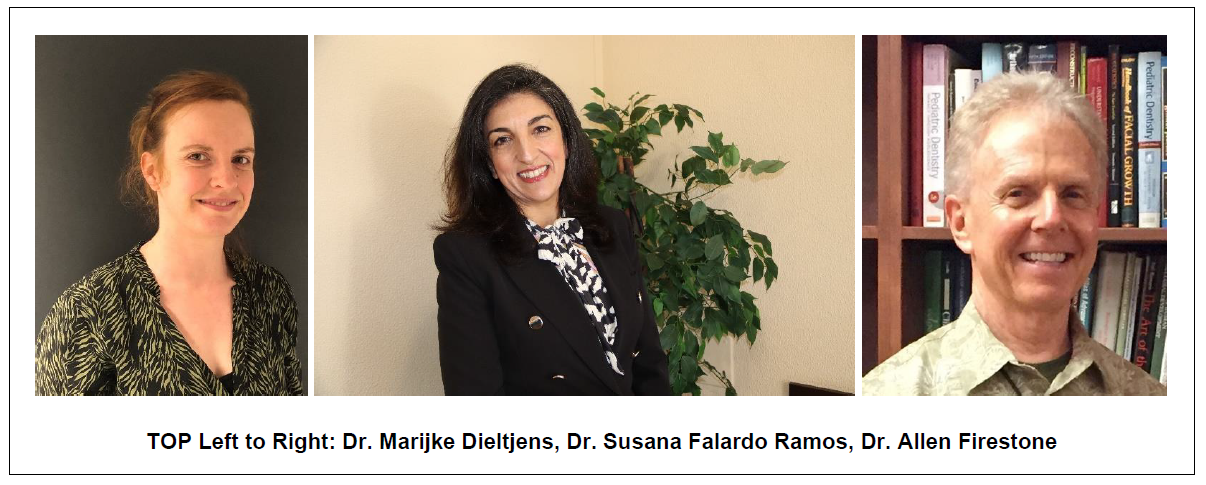
Special Article 3, Issue 9.4
Perspectives on Connecting Researchers and Clinicians
http://dx.doi.org/10.15331/jdsm.7270Disclaimer: The use, mention or depiction of any product, device, service or appliance shall not be interpreted as an endorsement, recommendation or preference by the AADSM. Any opinion expressed is solely the opinion of the individual, and not that of the AADSM.
The AADSM has long endeavored to be a bridge between the research world and the practice of dental sleep medicine. The Journal of Dental Sleep Medicine (JDSM) publishes original research, reviews and case reports with highlighting their clinical impact. Scientific abstracts, late-breaking science and a mix of research-based and clinical presenters are all a part of the Annual Meeting. All of this is done to promote evidence-based practice, connecting researchers and clinicians. As such, these perspectives from some notable dental sleep medicine researchers highlight ideas for better connecting researchers and clinicians.
WHAT HAS YOUR EXPERIENCE BEEN WORKING ON TEAMS WITH BOTH RESEARCHERS AND CLINICIANS TO CONDUCT CLINICAL STUDIES?
“In my opinion, conducting clinical research requires teamwork: you need people with a variety of skills and experience to coordinate all aspects of a clinical study. I am lucky to work in a multidisciplinary team, connecting not only different disciplines in the management of snoring and sleep-related breathing disorders, but also connecting clinicians with biomedical scientists, (bio-)engineers, study nurses… All of the team members work together with the same goal - a more patient-oriented approach, with respect to the different aspects of the study protocol. It is not always easy, since all team members have a different focus. But, creating multidisciplinary meetings with all team members around the table helps to clear things out and to get back on one line.”
- Marijke Dieltjens, PhD
“For years, I have been blessed with the opportunity to work on several multi-disciplinary teams of researchers and clinicians - that experience has been really amazing.
I have had the opportunity to collaborate with research teams in Portugal, Spain and in the USA, which has truly enriched me from a scientific and clinical point of view, but above all, from a human point of view. It gave me another perspective on science and in fact, improved a lot my skills as a clinician.
The inter-relationship between all professionals from different areas and countries involved on these teams allowed me to observe different realities and look at the patient as a whole body. This allowed me to have a more humanized approach and achieve better health outcomes.
From my experience, when well-structured, this multilevel collaboration contributes to increase scientific knowledge, create more qualified and better-quality data, promote novel therapies for patients, as well decrease the risk of failure of diagnoses and therapeutics.
We all work with a goal to search for improvements, either in screening and diagnosis methods, therapies or treatment for our patients.”
- Susana Falardo Ramos, DDS, MSc, PhD, IC-ABDSM, EL-EADSM
“I’ve always found great benefit and pleasure working together in a team of researchers and clinicians. Any team that shares a common goal and can work cooperatively helps everyone on the team. Not to be too dry and academic, of course the ‘PICO’ framework (Patient Population or Problem, Intervention, Comparative alternatives or Control group(s) and Outcomes), the most effective basis for developing research questions for clinical medicine and dentistry, is best addressed by a diverse group of experts with strength in clinical practice and research. But beyond technical excellence in clinical research design, I experience a personal joy and excitement working with other bright, interested people sharing their knowledge and expertise. Research isn’t just repetition, a straight and easy path, there are new and different questions at each step and the team has the knowledge and experience to answer them. Finally, whatever the outcome of the new intervention, success or failure, it is best when it is shared.”
- Allen Firestone DDS, MS
WHAT ARE SOME WAYS THAT RESEARCHERS AND CLINICIANS CAN WORK TOGETHER TO BETTER PROMOTE PATIENT HEALTH OUTCOMES
“Communication is a key point in coordinating all aspects of a clinical study, and having all team members on one line.. All team members have to interact with each other to exchange ideas and opinions. In that opinion, our multidisciplinary meeting is key in the collaboration of the different disciplines in treating patients with sleep-disordered breathing.”
- Marijke Dieltjens, PhD
There are so many ways that all professionals can and should work/collaborate to promote health.
First of all, patients must be seen in a psychosocial context, with the interaction of mind and body as a major impact on treatment outcomes.
Professionals that collaborate directly, should always search for improvement in skills and to acquire scientific knowledge either through workshops, meetings, congresses or other venues, in order to identify common problems and be aware of technologic innovations.
It is not enough for all specialists to master and apply their specific professional knowledge in isolation - it is necessary to gain knowledge to provide effective and efficient responses to complex problems. Establishing clinical protocols and interventive guidelines between all the professionals will give us all better clinical interactions and as well allows us to improve and promote more treatment outcomes.
In my opinion, it is imperative to act professionally according to an integral view of information and events, adopting the totality of knowledge, dialogue, and the exchange of information through open communication between researchers and clinicians.
And this only makes sense when there is bidirectional multidisciplinary collaboration between everyone!”
- Susana Falardo Ramos, DDS, MSc, PhD, IC-ABDSM, EL-EADSM

